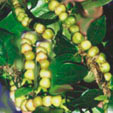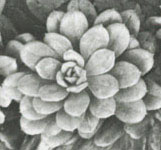-
Na Lei O Hawaiʻi - Na Moku ʻEwalu - (Leis of Hawaii - Eight Islands) - by Rev. Samuel Kapu
-
Hanohano Hawaiʻi moku o Keawe
E lei haʻaheo nei i ka lehua
Kilakila o Maui Haleakalā
Ua kapu roselani nau hoʻokahi
Kaulana Oʻahu i ka ʻilima
Kohu kapa ʻahuʻula kau poʻohiwi
Kaulana Kauaʻi i ka mokihana
Lauaʻe o Makana kau aloha
Kaulana Molokaʻi nui a Hina
I ka ulu kukui o Lanikāula
Lei ana Lānaʻi i ke kaunaʻoa
Me he manu ʻōʻō hulu melemele
Pūpū Niʻihau auhea ʻoe
Hoike aʻe ʻoe a i ko nani
Eia mai au Kahoʻolawe
Hoʻoheno ana au me ka hinahina
Hea aku mākou o mai ʻoe
Molokini ʻalo ke ʻehu o ke kai
Haʻina ʻia mai ana ka puana
Nā lei o Hawaiʻi e ō mai
Haʻina hou ʻia mai ana ka puana Hiʻiaka ia ka poli a o Pele
-

Lehua

Lokelani

ʻIlima

Mokihana
Kukui

Kaunaʻoa & Pūpū Shells

Hinahina
Majestic Hawaiʻi, home of
Keawe
Proudly wearing garlands of
lehua
Regal Haleakalā of Maui
Reserved is roselani for you
alone
Famed is Oʻahu for her
ʻilima
Adorns one like a feather
cape
Famed is Kauaʻi for
mokihana
Lauaʻe of Makana, given with
love
Molokaʻi, great isle of
Hina
The kukui grove of
Lanikāula
The lei of Lānaʻi, sweet
kaunaʻoa
Like the ʻŌʻō bird's yellow
feathers
Shells of Niʻihau, where are you?
Show forth your beauty
Here I am waiting, Kahoʻolawe
Hinahina decorates my shores
We call to you, oh give an
answer
Sea foam graces Molokini
Sing the refrain
Garlands of Hawaiʻi, answer
us
Sing the refrain for the last
time
Hiʻiaka in the bosom of
Pele
Source: Folk Songs Hawaii Sings by John M. Kelly, Jr. Library of Congress Catalog Card #62-14118 - Composed in the 1890's, this is the earliest of several songs with the same title that celebrate the uniting of the islands into the kingdom of Hawaiʻi. Red (ʻulaʻula) is the color of the big island of Hawaiʻi and lehua (metrosideros macropus) is their flower. Keawe was a distinguished chief of this island. Pink (ʻakala) represents Maui and the small pink rose or lokelani is their flower. Haleakala (House of the sun) is an extinct volcano on this island. The delicate ʻilima is the flower of Oʻahu and yellow (melemele) is its color. Purple (poni) represents Kauaʻi and the green mokihana berry (pelea anisata) found only on this island is their symbol. Lauaʻe o Makana is a sweet fern from Makana, Kauaʻi. Green (ʻomaoʻmao) is the color of Molokaʻi and the kukui or candlenut tree (aleurite moluccana) is their symbol. Hina was the goddess-mother of Molokaʻi and Lanikaula was perhaps the greatest prophet of ancient Hawaiʻi. Orange (ʻalani) is for Lanaʻi and the kaunaʻoa (cuscuta sandwichiana) is their symbol. Pupu shells and white (keʻokeʻo) honor the island of Niʻihau. Gray (ahina) is the color of Kahoʻolawe and their symbol is hinahina (heliotropium anomalum) a low spreading beach plant with narrow, clustered silvery leaves and small white flowers. It is sometimes replaced with Spanish moss. Molokini, a small, uninhabited island, has no symbolic color or flower. Hiʻiaka, the youngest and favorite sister of Pele traveled extensively in the seas between the islands.